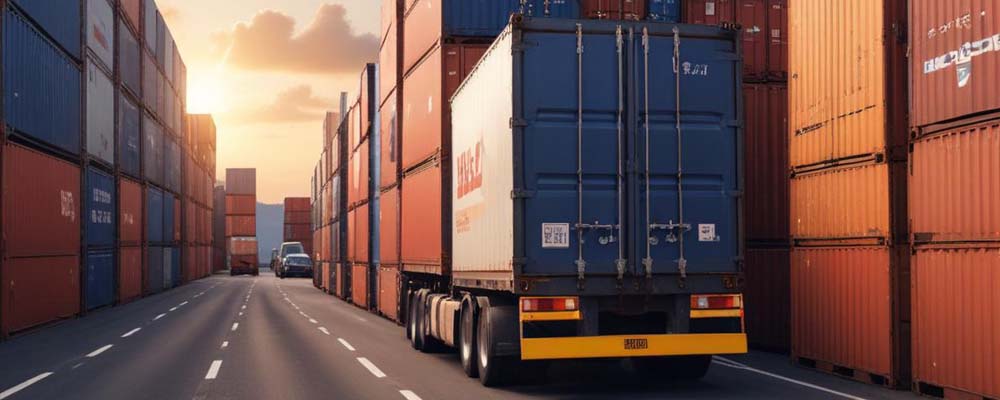
Navigating the world of international returns can be a daunting task for freight forwarding companies, logistics providers, importers and exporters, customs brokers, manufacturers, and e-commerce businesses. With global commerce on the rise, it’s crucial to understand the intricacies of managing returns effectively to enhance customer satisfaction and maintain smooth operations. This comprehensive guide will walk you through the essential steps and best practices for handling returns when shipping internationally.
The Growing Importance of Efficient Returns Management
Returns are an inevitable part of any business, but when it comes to international shipping, the complexity increases exponentially. Efficient returns management can make or break your reputation in the global market. Customers expect hassle-free returns, and meeting these expectations can lead to repeat business and positive reviews.
Implementing a strong returns policy not only enhances customer satisfaction but also reduces costs associated with reverse logistics. By understanding the key components of international returns, businesses can streamline their processes and minimize disruptions.
Understanding the Reasons for Returns
Before tackling the logistics of returns, it’s essential to understand why customers return products. Common reasons include defective items, incorrect orders, and unmet expectations. Identifying these reasons can help you implement preventive measures and reduce the volume of returns.
Defective items often result from manufacturing errors or damage during transit. Incorrect orders may stem from miscommunications or errors in order processing. Unmet expectations can be due to misleading product descriptions or inadequate quality. Addressing these issues at their source can significantly reduce return rates.
Establishing a Clear Returns Policy
A transparent and customer-friendly returns policy is the foundation of efficient returns management. Clearly outline the conditions under which returns are accepted, the timeframe for returns, and the process for initiating a return. Ensure this information is easily accessible on your website and included in order confirmations.
Provide detailed instructions on how customers should package and ship returned items. Include information on who bears the cost of return shipping and any applicable restocking fees. A well-defined policy not only sets customer expectations but also streamlines internal processes.
Handling Customs and Duties
One of the most challenging aspects of international returns is dealing with customs and duties. When products cross borders, they are subject to import regulations, which can complicate the returns process. It’s crucial to understand the customs requirements of both the origin and destination countries.
Work closely with customs brokers to ensure compliance with all regulations. Properly classify returned items to avoid unnecessary duties and taxes. Provide accurate documentation to facilitate smooth customs clearance and prevent delays.
Choosing the Right Shipping Carrier
Selecting the right shipping carrier is vital for efficient returns management. Consider carriers with expertise in international shipping and a robust network of distribution centers. Look for carriers that offer reliable tracking and insurance options to protect returned items during transit.
Negotiate favorable rates with carriers to reduce return shipping costs. Some carriers offer specialized services for returns, such as prepaid return labels and easy drop-off points, which can enhance the customer experience.
Implementing Reverse Logistics Solutions
Reverse logistics refers to the process of moving returned products from the customer back to the seller. Implementing effective reverse logistics solutions can streamline returns and reduce costs. Consider partnering with third-party logistics providers (3PLs) that specialize in reverse logistics.
3PLs can handle the entire returns process, from receiving and inspecting returned items to refurbishing and restocking them. Outsourcing reverse logistics allows businesses to focus on their core operations while ensuring efficient returns management.
Leveraging Technology for Returns Management
Technology plays a crucial role in managing international returns. Invest in a robust returns management system (RMS) that integrates with your existing supply chain and e-commerce platforms. An RMS can automate returns processing, track returned items, and generate detailed reports.
Implementing RFID technology can improve the accuracy of returns tracking and reduce human errors. Use data analytics to identify patterns in returns and implement corrective actions. Leveraging technology can enhance efficiency and provide valuable insights into your returns process.
Handling Refunds and Replacements
Timely and accurate refunds or replacements are essential for maintaining customer satisfaction. Establish clear protocols for processing refunds and replacements. Ensure that your financial systems are integrated with your returns management system to expedite payments.
Communicate proactively with customers throughout the returns process. Provide updates on the status of their return and estimated timelines for refunds or replacements. Clear communication fosters trust and improves the overall customer experience.
Minimizing Environmental Impact
Returns can have a significant environmental impact due to additional packaging and transportation. Implement sustainable practices to minimize this impact. Encourage customers to reuse original packaging for returns and choose eco-friendly shipping options.
Consider refurbishing and reselling returned items instead of discarding them. Partner with recycling programs to responsibly dispose of unsellable products. Adopting sustainable practices not only benefits the environment but also enhances your brand’s reputation.
Training and Empowering Your Team
Effective returns management requires a well-trained and empowered team. Provide comprehensive training to your customer service and logistics staff on your returns policy and procedures. Equip them with the tools and knowledge to handle returns efficiently.
Encourage a customer-centric approach and empower your team to make decisions that enhance the customer experience. Recognize and reward employees who excel in returns management to foster a culture of excellence.
Monitoring and Improving Returns Performance
Continuous improvement is key to successful returns management. Monitor key performance indicators (KPIs) such as return rates, processing times, and customer satisfaction. Utilize this data to pinpoint areas for enhancement and execute appropriate corrective measures.
Regularly review and update your returns policy to reflect changes in regulations and customer expectations. Stay informed about industry best practices and emerging trends in returns management. Proactive monitoring and improvement can drive efficiency and customer satisfaction.
Engaging with Customers
Building strong relationships with customers can mitigate the impact of returns. Engage with customers through various channels, including social media, email, and customer surveys. Solicit feedback on their returns experience and use it to make improvements.
Offer incentives for customers who provide feedback, such as discounts on future purchases. Show appreciation for their loyalty and address any concerns promptly. Engaging with customers fosters loyalty and enhances your brand’s reputation.
Conclusion
Handling returns when shipping internationally is a complex but essential aspect of global commerce. By understanding the reasons for returns, establishing a clear returns policy, and leveraging technology, businesses can streamline their returns process and enhance customer satisfaction. Efficient returns management not only reduces costs but also builds trust and loyalty among customers.
To learn more about optimizing your international shipping and returns, visit our website. Together, we can ensure your business thrives in the global market.












